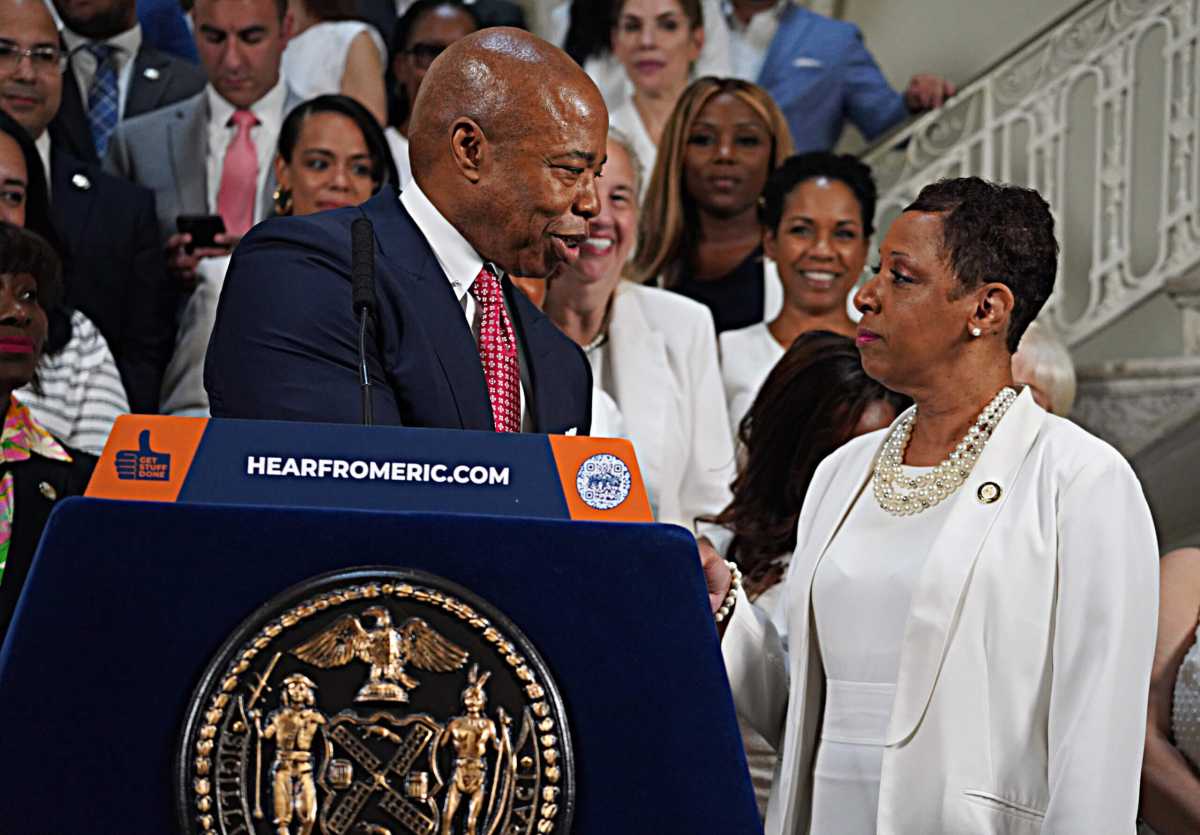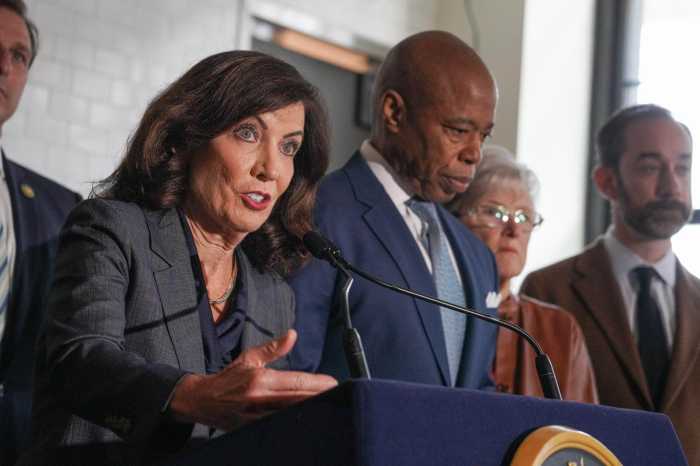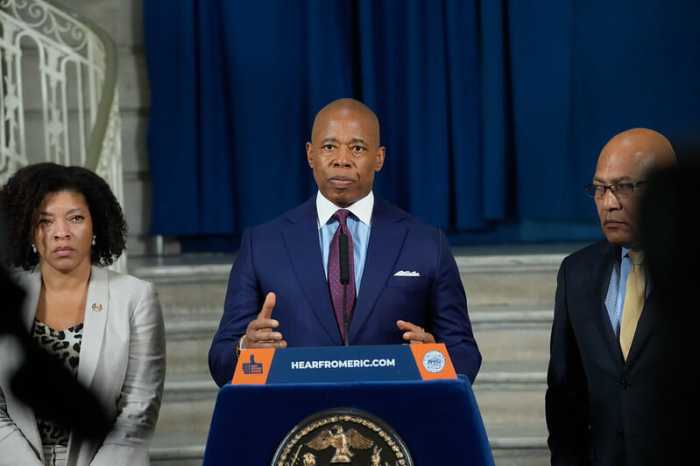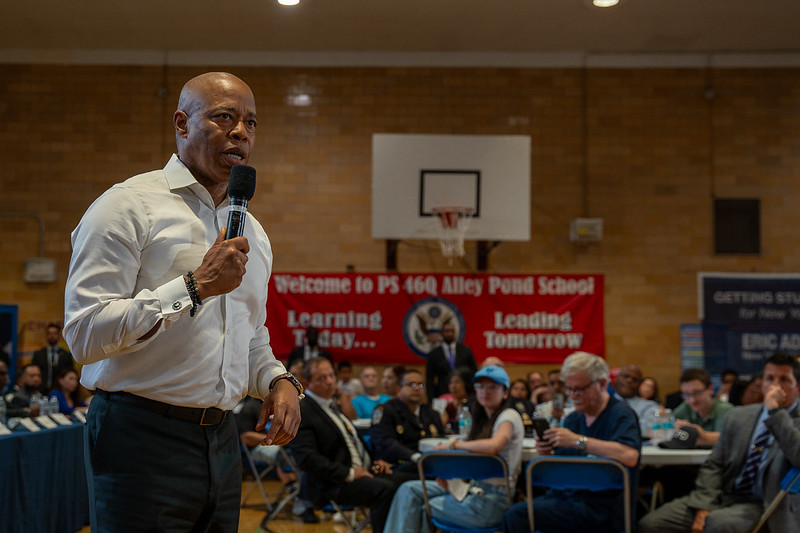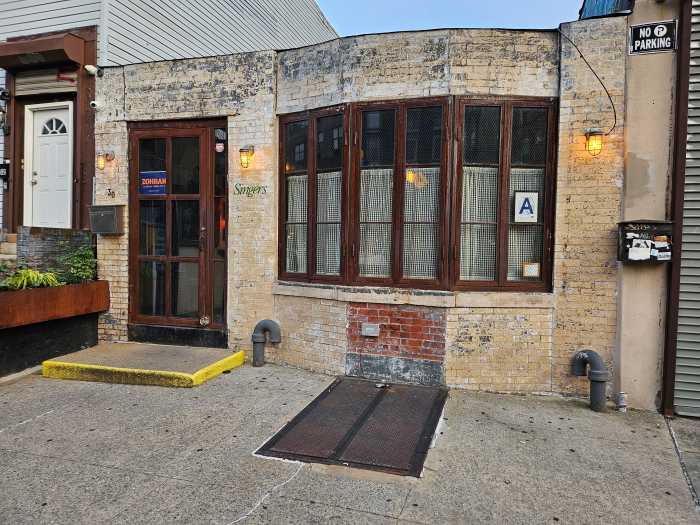Mayor Eric Adams and City Council Speaker Adrienne Adams shook hands on a tentative $107 billion Fiscal Year 2024 budget deal during a tense City Hall news conference following weeks of heated negotiations stemming from the mayor’s desire to make cuts in the name of fiscal prudence.
The symbolic deal comes a little over a day ahead of the city’s deadline for passing next year’s budget on-time: July 1, which is the start of the 2024 fiscal year.
While many of the finer details of the plan have yet to be revealed, the mayor and speaker said the budget reverses many of the wide-ranging cuts the mayor made in his executive plan, including an unpopular reduction to the city’s public libraries. But it still left other spending reductions in place.
Mayor Adams acknowledged that while crafting the spending plan wasn’t an easy process, they came out with “a win.”
“Unlike the Yankees it was not a perfect game. But we got the win for working class New Yorkers,” the mayor said. “I’m happy to stand here today with my City Council colleagues to announce we have reached an adopted budget agreement of approximately $107 billion.”
The budget, which still must be approved by the 51-member City Council, is the largest in city history.
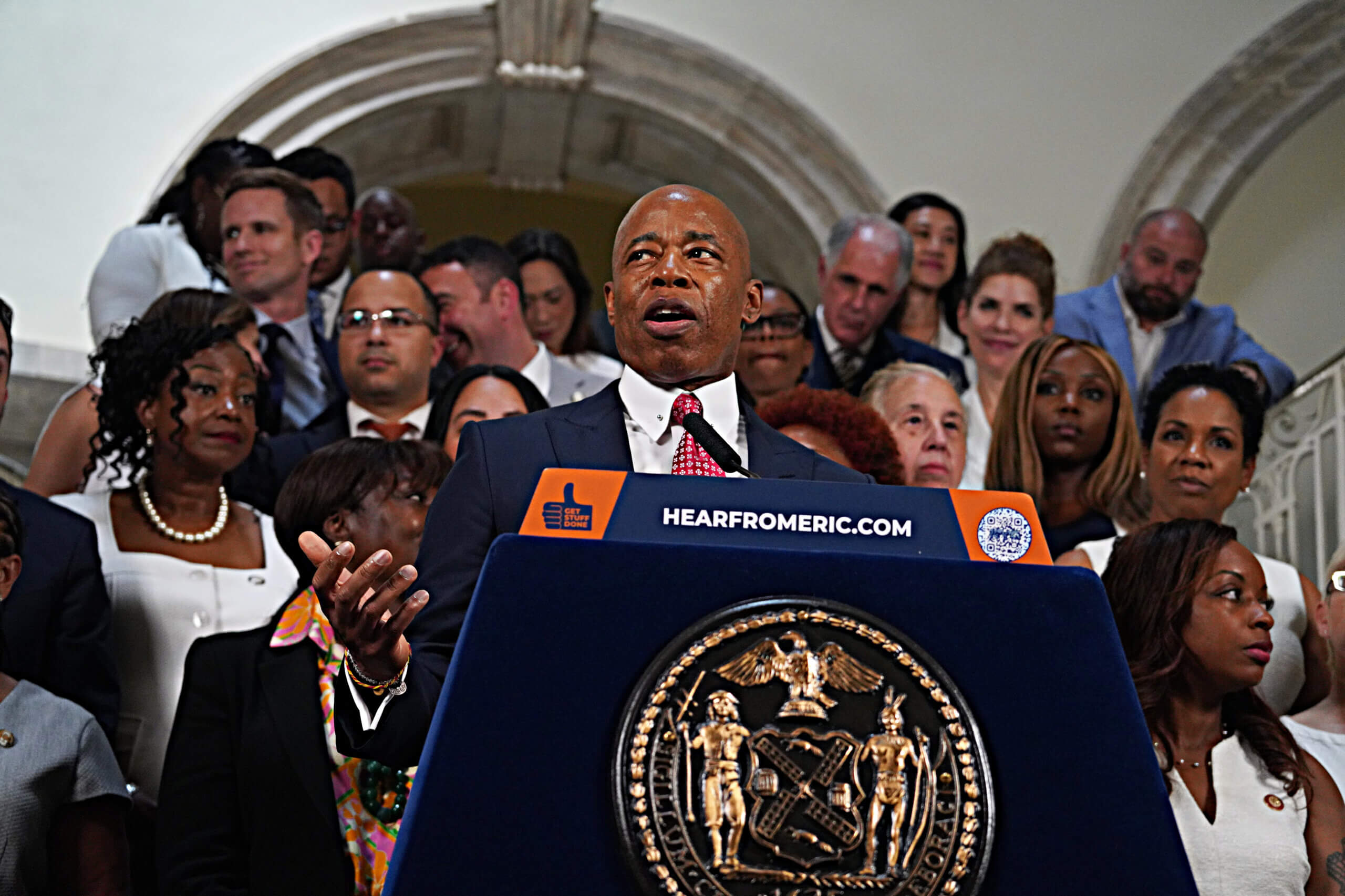
The numbers
The budget is roughly $6 billion larger than last year’s $101 billion adopted spending plan. It’s up about $300 million from the mayor’s $106.7 billion executive budget released in April and $4.3 billion from his $102.7 billion January preliminary plan.
The city is still staring down significant outyear budget gaps, Adams’ Budget Director Jacques Jiha said. The city faces a $5.1 billion gap in Fiscal Year 2025, $6.8 billion in FY26 and $7.9 billion in FY27.
Adams said he has made spending reductions equating to about $4.7 billion over this fiscal year and the next. He said the trims have played a role in his ability to balance the books and have reduced what would have been higher outyear gaps. The city goes into the next fiscal year, Adams said, maintaining $8 billion in reserves.
“We have so much to be proud of with this adoptive budget. It is on time, balanced and fiscally responsible,” the mayor said. “It strategically directs our resources to programs that will support everyday New Yorkers and represents a balance of administration and council priorities,”
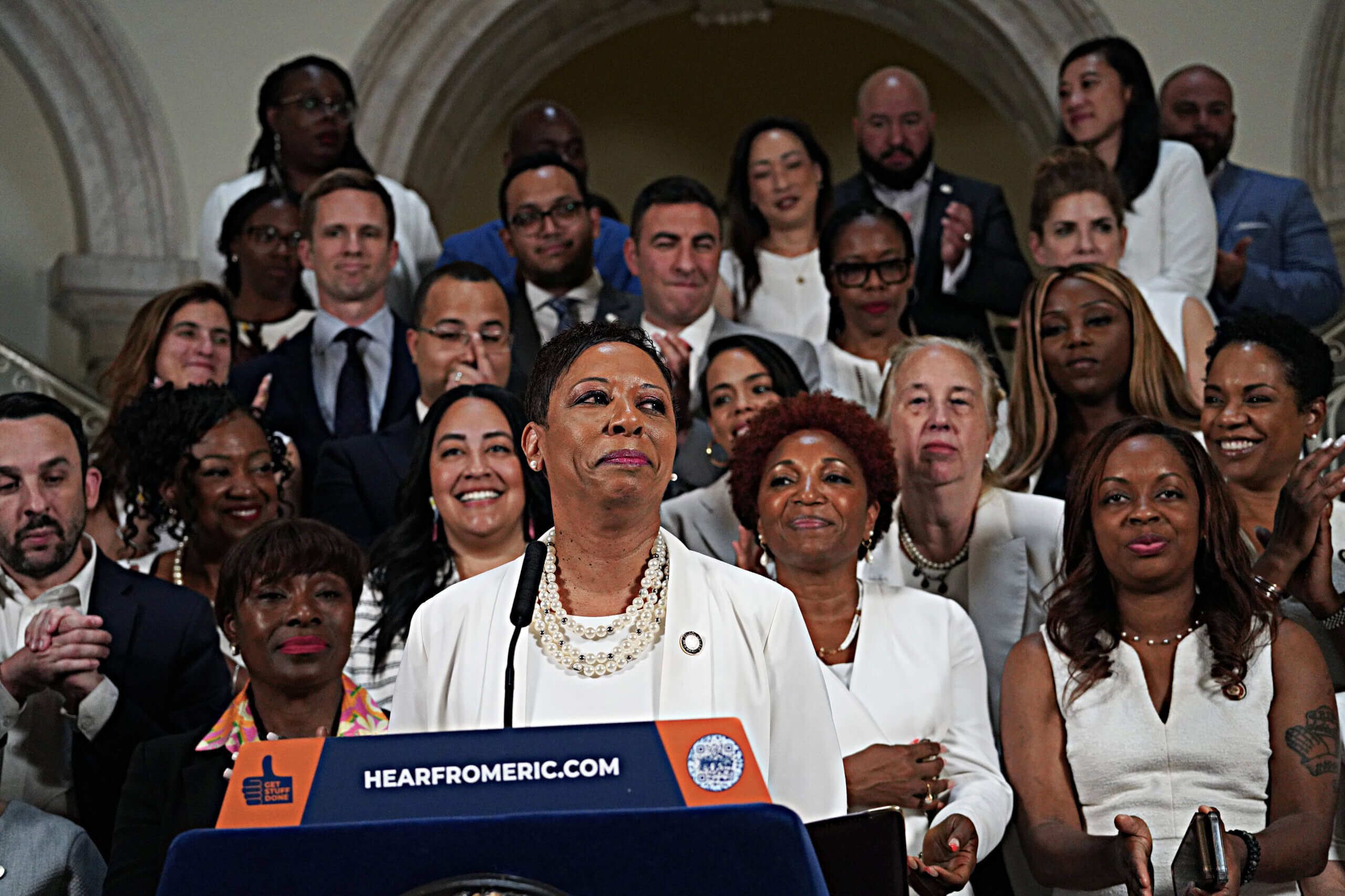
The pair said the budget negotiations were quite challenging for both sides and the speaker expressed disappointment that much of the deliberations were focused on restoring the cut funding, rather than putting money towards new initiatives.
“We understand that there are budget gaps in the out years that we must confront yet how we approach these challenges matters to New Yorkers,” the speaker said. “Through negotiations, the council worked to bridge the distance between us and the administration, fighting to restore investments in essential services and funding for many programs that our families, communities, and city need.”
But Citizens Budget Commission President Andrew Rein said the mayor and speaker agreed on a budget that will work for the next fiscal year but doesn’t consider mounting costs in future years.
“The City’s leaders announced a fiscal year 2024 budget agreement that will please many stakeholders—for the next year. It is essentially a one-year budget that again unfortunately delays the wise but hard choices needed to stabilize the City’s fiscal future,” Rein said. “With the coffers temporarily bulging, the budget increases fiscal cliffs, widens future budget gaps, and misses the opportunity to deposit money into the Rainy Day Fund.”
Where the dollars are going
The mayor achieved savings mostly through budget cuts enacted in three rounds of measures known as “Programs to Eliminate the Gap” (PEGs) over the past year. The cuts were necessary, Adams argued, because of the mounting cost of an influx of over 80,000 migrants to the city — estimated to cost $4.3 billion by next July, the cost of settling deals with public sector unions, $500 million in cost-shifts from the state budget, and a possible recession on the horizon.
On top of the $36.2 billion that has been placed back in the coffers of the city’s three public library systems, the plan restores proposed funding cuts by the mayor to various city agencies and initiatives. Those include, returning $40 million to cultural institutions, $32.9 million to the New York City Housing Authority (NYCHA) for rehabbing vacant apartments, $7 million for Department of the Aging for meals for seniors and $58.2 million to several City University of New York programs.
“Brooklyn, Queens, and New York Public libraries are thrilled to hear the announcement that proposed cuts have been fully reversed in the City’s Fiscal Year 2024 budget,” leaders of the three systems said in a statement.
Adams said they were able to restore much of that funding due to better than expected tax revenues.
The plan does still maintain several cuts, including a $17 million trim to the city Department of Corrections that fund reentry programs at Rikers Island.
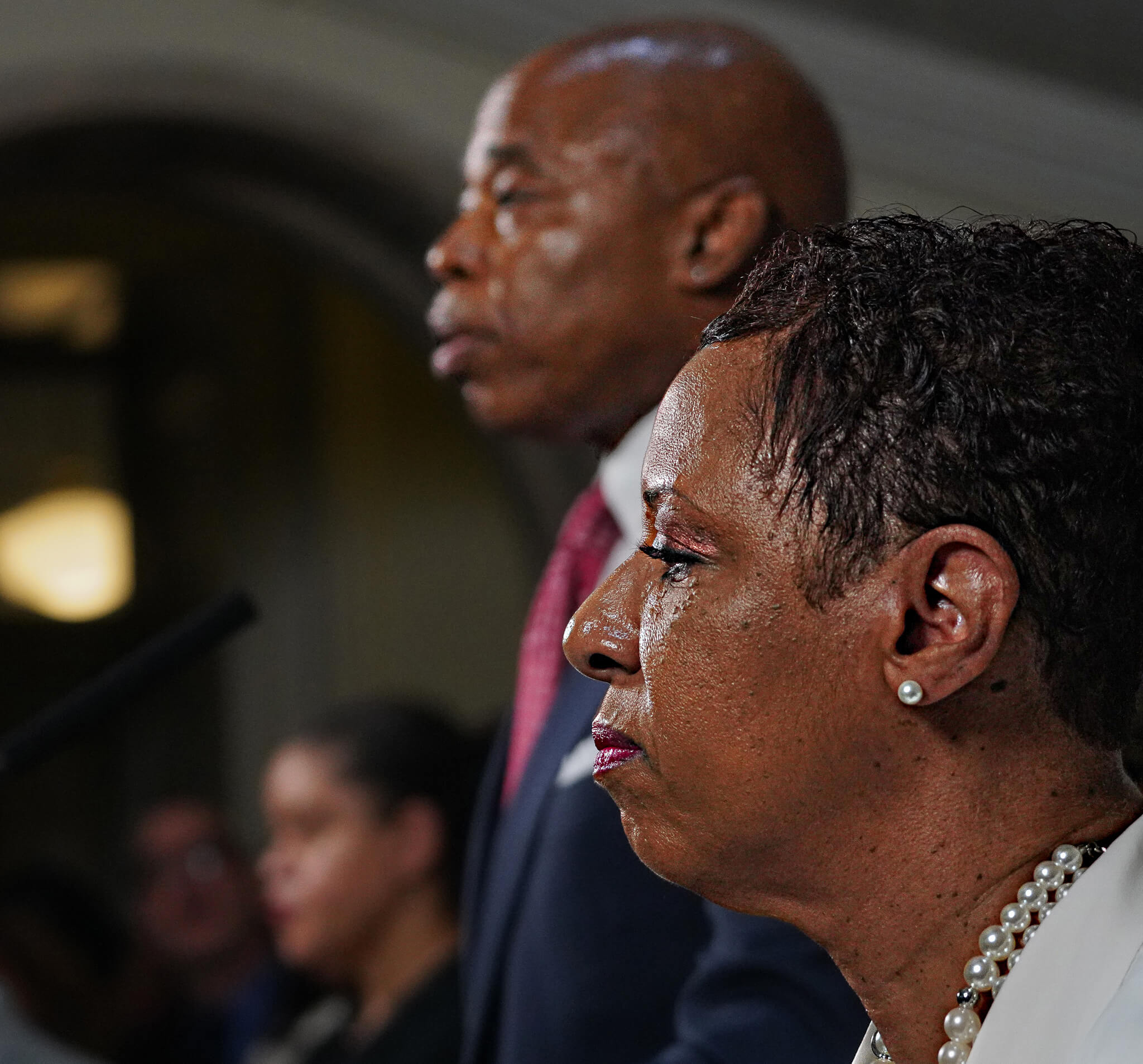
Funding for public schools across the Department of Education (DOE) will remain flat from last fiscal year, the mayor said, even with a decline in enrollment. The police department will also be funded at roughly the same level as last fiscal year, when it recieved $5.53 billion.
The plan also put money toward some new initiatives and funding already existing programs at higher levels.
Under the deal, there will be extended hours for the city’s 3-K seats, using $15 million to convert 1,800 seats to operate behind regular school day and school year hours. It also includes a cost of living adjustment (COLA) for nonprofit workers employed by organizations contracted with the city to the tune of $40 million in recurring funding, which coupled with $60 million from last year comes out to $100 million for FY24. However, that figure is less than the approximately $200 million nonprofit workers had demanded.
“As a city that depends on the valuable labor of nonprofit workers. It is imperative that we fairly compensate workers with an overdue cost of living adjustment,” Speaker Adams said. “Securing pay increases for these workers, the majority of whom are women and people of color, is a matter of gender, racial and economic justice.”
Restoring cuts
While Speaker Adams highlighted those initiatives and several other funding wins for the council, she expressed disappointment that so much of the budget negotiating process was focussed on restoring the mayor’s funding cuts.
“These negotiations were not easy,” the speaker said. “And in fact, they were uniquely challenging because of how much it focused on restoring cuts to so many important programs. We left nothing on the table because we know the immense need throughout the city and the lives at stake.”
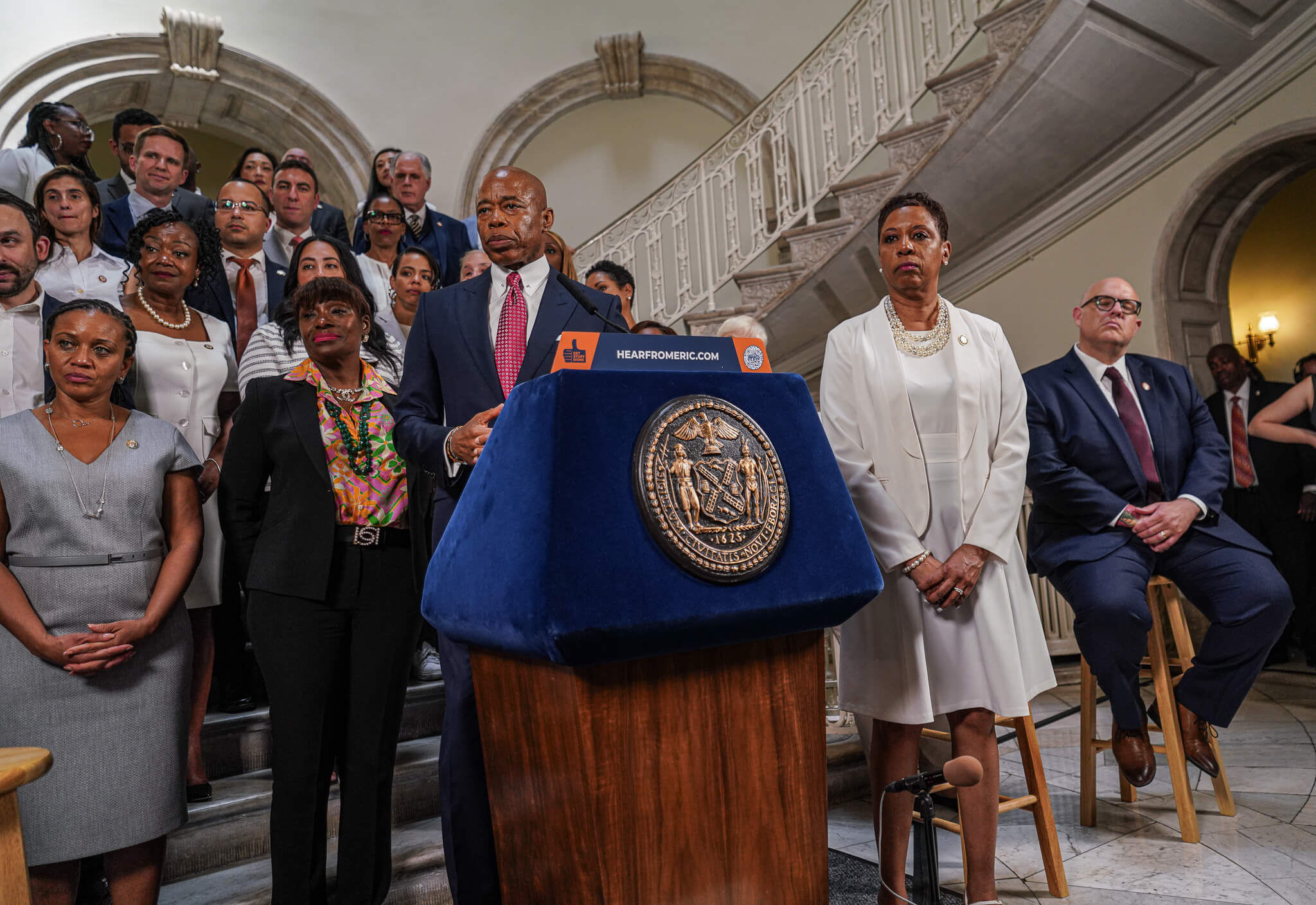
The mayor insisted that he didn’t want to make any cuts at all, but had to make hard decisions about what should be cut in order to pay for expenses like the migrant crisis, which he said has cost the city $1.4 billion so far. He added that everyone involved in crafting the budget came out “emotionally drained.”
“This is painful to all of us to watch what our city is going through,” he said. “None of us take joy of walking down the street to see someone living on the street. No one takes joy of going on Rikers Island and seeing people who have been denied by the city … So we don’t take joy in any of this.”
Additional reporting by Christian Murray.



